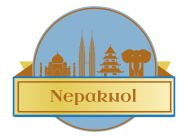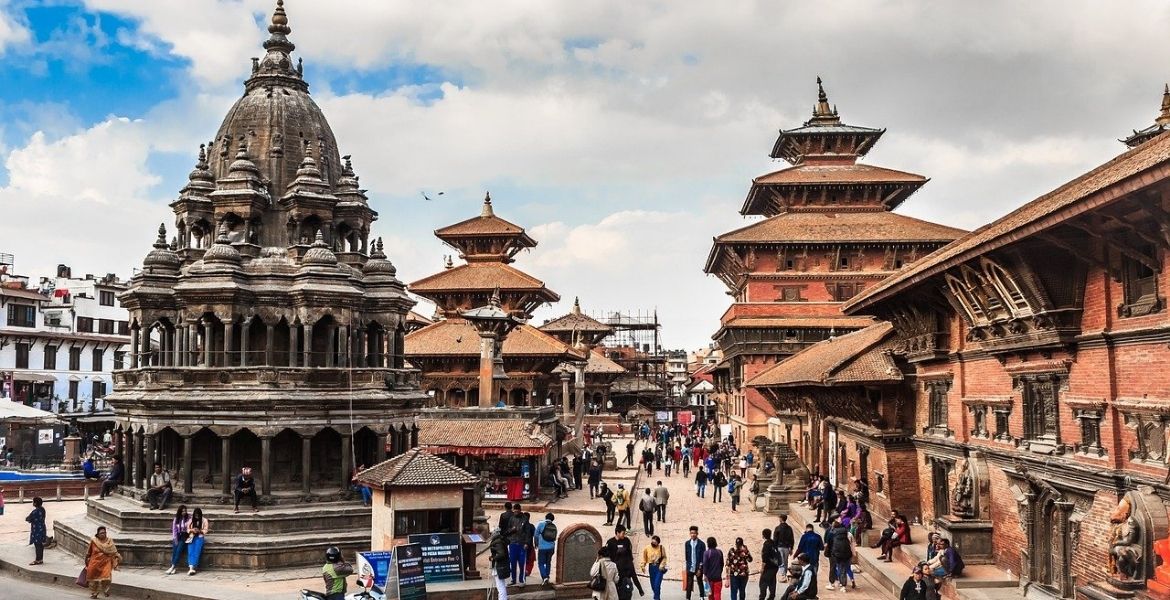Brief History of Nepal From Its Origins to the Present Day
The Ancient Himalayan Kingdom From Myth to the Republic
The ancient history of Nepal does not present widely reliable historical documents, and is lost in legend. It is said that in ancient times the Kathmandu valley was a lake: the bodhisattva Manjusri, breaking the ground with a sword stroke, created the Chobar gorge, making its waters drain.
Around the eighth century BC the Kirati (or Kiranti) were the first inhabitants of the valley to give themselves an embryonic social organization. In the 6th century BC, according to traditional chronology, Siddhartha Gautama was born (the historical Buddha) near Lumbini, a city located in the southern part of the country on the border with India: the event is witnessed by a commemorative column erected here in the second century BC by the Indian Buddhist emperor Ashoka of the Maurya dynasty.
In the 4th century AD the territory was invaded by the Lichhavi, who introduced Hinduism and its social system ( Muluki Ain ), together with the subdivision of the population into castes.
From the 9th to the 12th century the Thakuri had supremacy over other ethnic groups, followed in the 13th century by the Malla. At that time Nepal was not a unitary kingdom, but a set of states at war with each other. In the Kathmandu Valley itself there were a few independent city-states, each with its own ruler. The rulers of individual cities were often related by kinship, but on occasion they did not hesitate to declare war on each other. The Malla were great patrons: the majority of the historical and artistic vestiges of the country (particularly in the Kathmandu valley) date back to that period.
Nepalese political unity occurred relatively recently: towards the eighteenth century, the decline of the Malla lineage, we witnessed the affirmation of the Shah, the ruling family until 2007, the year of the abolition of the monarchy. Originally from Gorkha, the Shahs progressively subdued the other local potentates until, during the Indra Jatra festival of 1768, Prithvi Narayan Shah entered Kathmandu with his army and was crowned the first king of unified Nepal.
The Shahs did not show great interest in art, and compared to the previous period they did not make significant contributions in this field, preferring to devote themselves mostly to the consolidation of political power, war and territorial expansionism. The imperialist ambitions of Nepal also included Tibet: when the latter was attacked, China reacted by defeating the Gorkha army, requiring Nepal to pay an annual tribute.
Tensions with British India resulted in the Anglo-Nepalese war (1815–1816) where Nepal suffered a serious defeat. The Sugauli treaty provided for the transfer of part of the Terai and Sikkim to the British East India Company in exchange for the preservation of autonomy.
On the night of September 14, 1846, an event took place that would influence the political life of the country for over a century. An army officer, Jang Bahadur Kunwar, had several members of the Court and the army murdered while they were gathered in the courtyard of Kot (the “massacre of Kot”). Thanks to this unscrupulous action, to his shrewdness, as well as to the weakness of the legitimate king Rajendra, he managed to centralize power on himself, managing to get himself named Maharaja (“great king”), with a guarantee of transmission of the title to his descendants. Thus a diarchy was created with a monarch deprived of all power, and a hereditary government in the hands of the Rana family (new and prestigious surname adopted by Jang Bahadur).
The Frog Period(1846–1951) presents, in addition to shadows, also lights: they abolished slavery and sati, the Hindu custom of throwing the widow (alive) on the funeral pyre of her deceased husband. They were the first to confront the Europeans: during their rule, neoclassical architecture was introduced in Kathmandu, brought by the British to nearby British India. They are also responsible for the first attempts to modernize the country.

In 1947 the Nepalese Congress party was founded by Bishweshwar Prasad Koirala, inspired by the Indian Congress party. Thanks to this new political force, assisted by the government of India, King Tribhuvanmanaged to escape into exile. Rana prime ministers settled then his grandson Gyanendra, a three-year-old boy. Tribhuvan returned from exile in January 1951 and was recognized by popular acclaim as a legitimate ruler. The last hereditary prime minister, Mohan Shamsher, resigned on November 12, 1951.
In 1955, King Tribhuvan died, and the crown passed to his son Mahendra. He called the first elections in the country’s history, which were held in 1959. Victory went to the Nepalese Congress party, and Bishweshwar Prasad Koirala took over as prime minister.
In 1962 the king, dissatisfied with democracy, declared a ban on political parties and decided to restore the ancient Indian system of panchayats, based on local assemblies. This representative system with a pyramid structure remained in force until 1991, and was characterized by the most complete non-partisanism.
In 1972 Mahendra was succeeded by his son Birendra, who did not want to change the institutional structure of the country. After the escalation of violence and popular protest, he was forced to hold a referendum on the current political system in 1981: a weak majority still spoke out for the maintenance of the panchayat.
In 1990, in an atmosphere of open revolt ( Jana Andolan, that is, popular movement), the king declared the old system fallen, and set about assuming the role of constitutional sovereign.
In the decade 1991–2001 there was a succession of coalition governments without sufficiently strong majorities, and generally without a specific political orientation. In 1996, after an ultimatum, the Nepalese Maoist Communist Party started the guerrilla activity against the government and the monarchy, which was destined to last for a decade.
On 1 June 2001, Crown Prince Dipendra carried out a massacre in the royal palaceas a response to his parents’ refusal to accept the bride of his choice. Dipendra killed his father Birendra and his mother Aishwarya along with a dozen other relatives, then turned the weapon against himself, but did not die on the spot. Despite being in a coma, he was still the crown prince, and was proclaimed king on the hospital bed. He died a few days later and, on June 4, 2001, Uncle Gyanendra, Birendra’s brother, was installed for the second time (the first was from November 1950 to January 1951).
On February 1, 2005, King Gyanendra dismissed the current government led by Sher Bahadur Deuba, declaring a state of emergency, assuming executive power and appointing a council of ministers of his strict confidence.
In the spring of 2006, the second general mobilization for democracy in the history of the country broke out ( Loktantra Andolan, ie the democratic movement, or Jana Andolan II ). On April 21, after a week of uninterrupted mass marches, King Gyanendra renounced absolute power and called on the seven opposition parties to designate a new prime minister. The choice fell on the elderly leader Girija Prasad Koirala, who was sworn in on April 30, 2006. On the same day, Parliament met for the first time since 2002, unanimously approving Koirala’s proposal for the election of a Constituent Assembly.
The Maoists, in fact winners of the civil war against the monarchy, thus entered Parliament, starting a path of disarmament, which however was not accepted by a splinter fringe, intent on fighting for the independence of southern Nepal. In 2007, 150 UN officials arrived (soldiers or ex-military) who had the task of verifying the disarmament of the Maoists. The peace process continued slowly but without violence.
On 24 December 2007, the seven main parties, including the former Maoist rebels and the ruling parties, reached an agreement on the abolition of the monarchy: on 28 December of the same year the transition to the Federal Democratic Republic was approved. The first free elections after nine years took place on 10 April 2008, sanctioning the clear victory of the Maoist party with 220 seats out of 601. On May 28, 2008 the Republic was proclaimed.
On April 25, 2015, a disastrous earthquake, of magnitude greater than 7th, occurred, which claimed many thousands of victims, causing the destruction of numerous cultural heritage sites of UNESCO.

